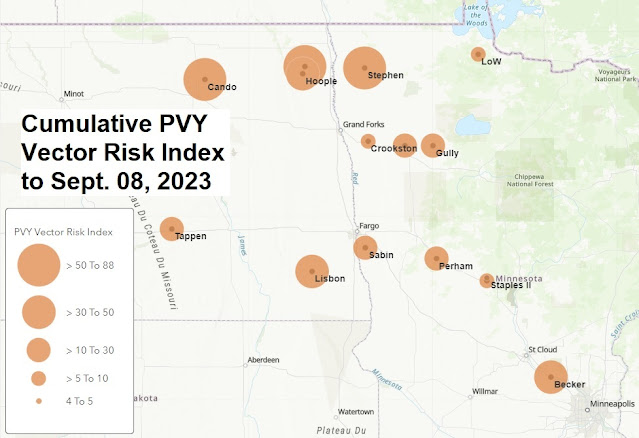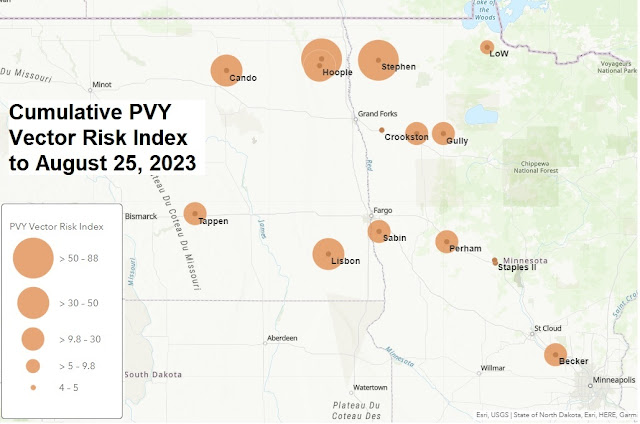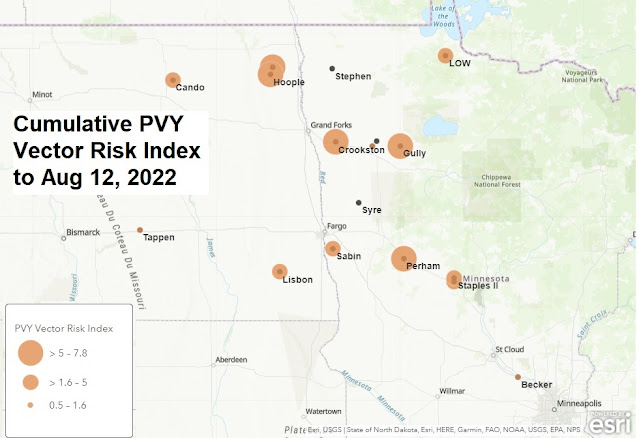Trap Catches to July 28 - Aug 04, 2023.
It was another big week for aphids, and with this week's capture, this may turn into a heavy vector pressure season. With 17 trap sites reporting, we saw regional vector trap captures almost triple over last week. Not surprisingly, the PVY Risk Index followed suit with many of the vectors captured having relatively high efficiency in transmitting the virus.
As the small grains mature, we're seeing large flights of English grain aphid, the most populous aphid in small grains this year. By the 2013-2020 averages, the capture numbers generally double the first week of August over what was captured the previous week. An while we're close to the average pattern, we're well above the average numbers for the first week of August. Green peach aphids showed up in a number of additional locations and soybean aphids were recovered from all trap locations.
Green peach aphids were recovered from Cando, Lisbon, Crookston, Sabin and Perham. Only Perham and Staples II site did not recover English grain aphids; this species was well into the double digits at several sites (a total of over 504 were captured from all traps together). Soybean aphids tripled over last week, nearing 400 regionally. Both thistle and Cotton/melon aphids were numerous and widespread this week, as were the non-vector aphids species, with traps recovering almost 400. While not contributing to the potential of PVY spread, the number of non-vectors species recovered does indicate just how heavy aphid flights were this week.

With the higher numbers, scouting is strongly advised. But remember, non-colonizing aphid species (e.g. soybean aphid) will rarely be found in a field only by scouting. They move through a field, sampling the plants, but not leaving any daughters on potatoes because it's an unsuitable host for them. But they're still moving through the field, potentially moving any virus inoculum in the field. So, it's a good time to start using crop oils if you haven't already, and to be thinking about anti-feeding insecticides as well (see below).
So, you keep scouting and we'll keep counting.
Click on any image below for full-scale version.
Cumulative PVY Vector Risk Index to 8/04/2023
Cumulative PVY Vector Risk Index to 8/05/2022 for Comparison
Aphid Species Capture and PVY Vector Risk Index for the week ending 8/04/2023
Cumulative Aphid Species Capture and PVY Vector Risk Index to 8/04/2023













































